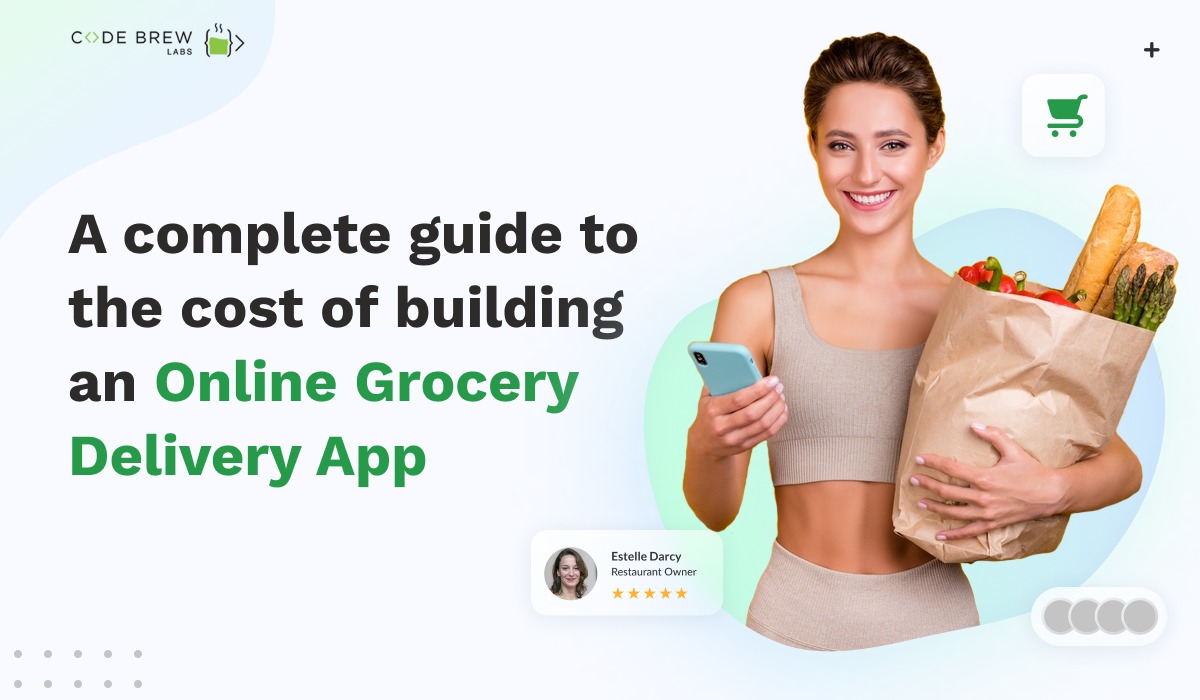
As you might know, there has been a gradual shift with the world taking a keen interest to build online grocery delivery businesses like Deliveroo and Swiggy. If you are also looking to make the most of this lucrative opportunity, this blog offers you all the necessary information that goes into the cost to build an online grocery delivery app.
Table of Contents
But before we dive into the costings, what’s the reason for this global interest in the online grocery business?
Well, the online grocery delivery business has seen unprecedented success over the last 2-3 years. As per a survey, online delivery services are projected to increase by USD 800 billion from 2020 to 2025. What’s more promising is that it’s increasing at a Compound Annual Growth Rate of 25.25%. With these statistics being no secret to the world, everyone business entrepreneur wants to make the most of this golden-business opportunity.
Now, when it comes to app development costs, there are many factors that lead to the final price. And so, Code Brew also offers a detailed view of how an online grocery delivery business works and the various cost factors associated with it.
Covid-19 made people pursue a different shopping method than the traditional ones. In a survey conducted by AlixPartners in 2021, 48% of consumers admitted that their shopping habits have been changed permanently. Today, more people are inclined towards shopping online instead of visiting a local store for a contactless experience. And it’s not only about the online grocery industry, the same pattern was seen in e-commerce businesses as well.
In addition, the daily lifestyle of working-class people is also responsible for the change. As per a source, the long working hours rarely leave people with any time to do their daily chores. Thus, online shopping is becoming a natural alternative for them.
This phenomenon of more people inclining towards online shopping for all their needs is creating a business opportunity. Hence, a huge influx of business entrepreneurs coming up with innovative ideas to serve people efficiently on their grocery orders.
Before starting a grocery delivery business, you must know the three basic types of grocery business models. This is where the revenue comes from.
Some of the thriving names in the industry like Zomato and UberEats are using this multi-store business model. In this model, as a business owner, you are the middleman that provides a website/application, interface, and necessary tools for efficient communication between a customer and the vendor.
This is how the process goes.

Here’s how you make money from this model.
When it comes to managing the whole process of ordering and delivering an order efficiently, an inventory-based model works great. Instead of relying on the vendors to ensure the quality of grocery delivered to the customer, all the grocery item is stored in grocery the inventory. Once, the local staff checks the quality, only then it is delivered to the customer using an in-house and third-party delivery agent.
Here’s how you make a commission in this model.
In the shopping model, the service provider controls the entire process of grocery delivery. When a customer places a grocery order, the service provider picks up the vendor at random. After which, an in-house delivery agent delivers the order to the customer.
Here’s how you make revenue out of this business model.
A well-organized grocery application consists of three key functions – user panel, admin panel, and delivery panel. Each of these attributes is essential for a systematic operation between different elements of the process – a customer, service providers, and delivery staff.
A user panel must consist of all the customer-centric elements. Here are some go-to functions to include in your user panel.
An admin panel is a function used by the people responsible for the smooth management of the customer order.
Here is a list of grocery app functions you must have in your grocery delivery application.
The variety of features you chose to have in your grocery delivery application accounts for the total costs of the app development. Here are the three versions of the feature-based costings.

The cost to build a grocery application further extends to the platform you choose to serve your customers on. So, where feature-based cost estimation helps you to determine the aesthetics of the application, platform-based costing helps to set a budget plan. Here’s how the cost varies for a complex feature version on different platforms.

The complete cost to build an online grocery delivery app stands at around $70,000. However, that’s a complete package for top-notch services. If your requirement for a grocery delivery app is minimal, you may not need different features.
But here’s the thing. The current trend and the projected growth in the online grocery ordering industry in the next five years are massive. With so much potential, there will be an influx of more grocery delivery startups competing for the same opportunity, altogether. In such a competitive environment, you can only be able to gain revenue if you offer somewhat better services than your competitors.
Now, considering several factors are shaping the dynamics of your online grocery business, it might become a stressful task. Well, why not outsource the app development to experts?
Speaking of experts, Code Brew offers all the essential features and functionalities at a convenient price. Our team of experienced individuals has a record of developing thousands of mobile applications for various on-demand services.
Contact us today to get a demo! And we will discuss the successful beginning of your online grocery business.
